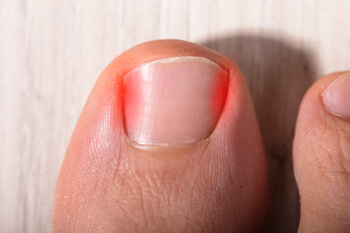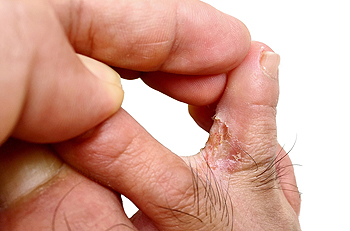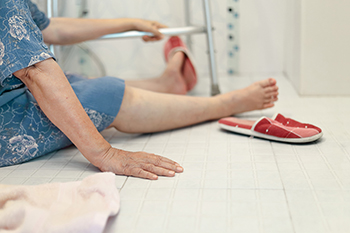August 2023
What Is a Podiatrist's Job Description?

Podiatrists are medical professionals who play a vital role in foot and ankle health. Their primary focus is diagnosing, treating, and preventing various conditions related to the foot and ankle. From routine checkups to complex surgeries, a podiatrist’s responsibilities encompass a variety of tasks. Podiatrists assess patients' foot and ankle health, conduct thorough examinations, and utilize diagnostic tools to identify issues. They provide personalized treatment plans, including medication, physical therapy, orthotics, and surgical interventions when necessary. As experts in their field, podiatrists are dedicated to ensuring optimal foot health and aiding patients in maintaining mobility, comfort, and overall well-being. If you are interested in pursuing the field of podiatry as a profession, it is suggested that you speak with this type of doctor who can help you make an informed decision about this career choice.
If you are dealing with pain in your feet and ankles, you may want to seek help from a podiatrist. Feel free to contact Dawn Miles, DPM from Florida. Our doctor can provide the care you need to keep you pain-free and on your feet.
What Is a Podiatrist?
A podiatrist is a doctor of podiatric medicine who diagnoses and treats conditions of the foot, ankle, and related structures of the leg. Your podiatrist may specialize in a certain field such as sports medicine, wound care, pediatrics, and diabetic care. Podiatrists have the ability to become board certified through training, clinical experience, and then taking an exam.
What Do Podiatrists Do?
On a daily basis, a podiatrist may perform the following activities:
- Diagnose foot ailments such as ulcers, tumors, fractures, etc.
- Use innovative methods to treat conditions
- Use corrective orthotics, casts, and strappings to correct deformities
- Correct walking patterns and balance
- Provide individual consultations to patients
It is very important that you take care of your feet. It’s easy to take having healthy feet for granted, however foot problems tend to be among the most common health conditions. Podiatrists can help diagnose and treat a variety of feet related conditions, so it is crucial that you visit one if you need assistance.
If you have any questions please feel free to contact one of our offices located in Palatka and Saint Augustine, FL . We offer the newest diagnostic and treatment technologies for all your foot and ankle needs.
Causes and Treatments for Ingrown Toenails

Within the world of common foot woes, ingrown toenails stand as a painful and bothersome issue that can disrupt daily life. These occur when the edges of a toenail grow into the surrounding skin, leading to inflammation and discomfort. Often stemming from improper nail trimming, wearing tight footwear, or genetic reasons, ingrown toenails can bring about pain, swelling, and possibly infection. Treating this condition involves gentle soaking, proper nail trimming techniques, and wearing comfortable, well-fitting shoes. In cases of infection, consulting a podiatrist is crucial in preventing complications. In more severe instances, surgical intervention may be necessary to provide long lasting relief. By understanding the causes and exploring the range of treatments, individuals can actively engage in preventing ingrown toenails. If you have developed an ingrown toenail, it is strongly suggested that you confer with a podiatrist who can offer you treatment methods that are correct for you.
Ingrown toenails may initially present themselves as a minor discomfort, but they may progress into an infection in the skin without proper treatment. For more information about ingrown toenails, contact Dawn Miles, DPM of Florida. Our doctor can provide the care you need to keep you pain-free and on your feet.
Ingrown Toenails
Ingrown toenails are caused when the corner or side of a toenail grows into the soft flesh surrounding it. They often result in redness, swelling, pain, and in some cases, infection. This condition typically affects the big toe and may recur if it is not treated properly.
Causes
- Improper toenail trimming
- Genetics
- Improper shoe fitting
- Injury from pedicures or nail picking
- Abnormal gait
- Poor hygiene
You are more likely to develop an ingrown toenail if you are obese, have diabetes, arthritis, or have any fungal infection in your nails. Additionally, people who have foot or toe deformities are at a higher risk of developing an ingrown toenail.
Symptoms
Some symptoms of ingrown toenails are redness, swelling, and pain. In rare cases, there may be a yellowish drainage coming from the nail.
Treatment
Ignoring an ingrown toenail can have serious complications. Infections of the nail border can progress to a deeper soft-tissue infection, which can then turn into a bone infection. You should always speak with your podiatrist if you suspect you have an ingrown toenail, especially if you have diabetes or poor circulation.
If you have any questions, please feel free to contact one of our offices located in Palatka and Saint Augustine, FL . We offer the newest diagnostic and treatment technologies for all your foot care needs.
Unmasking the Causes of Athlete’s Foot

Athlete's foot, medically known as tinea pedis, is a common fungal infection that primarily affects the feet. This condition is caused by various dermatophyte fungi that thrive in warm, damp environments like communal showers, swimming pools, and locker rooms. The fungus can also spread through contact with infected individuals or contaminated surfaces. Certain factors increase the risk of developing athlete's foot. Athletes, hence the name, are particularly vulnerable due to the frequent use of communal spaces. In addition, individuals who wear tight-fitting shoes or synthetic socks that trap moisture are at higher risk. Maintaining proper foot hygiene, wearing breathable footwear, and avoiding prolonged exposure to damp conditions are essential preventive measures. If you have developed athlete’s foot, it is suggested that you consult a podiatrist who can guide you toward effective treatment measures.
Athlete’s Foot
Athlete’s foot is often an uncomfortable condition to experience. Thankfully, podiatrists specialize in treating athlete’s foot and offer the best treatment options. If you have any questions about athlete’s foot, consult with Dawn Miles, DPM from Florida. Our doctor will assess your condition and provide you with quality treatment.
What Is Athlete’s Foot?
Tinea pedis, more commonly known as athlete’s foot, is a non-serious and common fungal infection of the foot. Athlete’s foot is contagious and can be contracted by touching someone who has it or infected surfaces. The most common places contaminated by it are public showers, locker rooms, and swimming pools. Once contracted, it grows on feet that are left inside moist, dark, and warm shoes and socks.
Prevention
The most effective ways to prevent athlete’s foot include:
- Thoroughly washing and drying feet
- Avoid going barefoot in locker rooms and public showers
- Using shower shoes in public showers
- Wearing socks that allow the feet to breathe
- Changing socks and shoes frequently if you sweat a lot
Symptoms
Athlete’s foot initially occurs as a rash between the toes. However, if left undiagnosed, it can spread to the sides and bottom of the feet, toenails, and if touched by hand, the hands themselves. Symptoms include:
- Redness
- Burning
- Itching
- Scaly and peeling skin
Diagnosis and Treatment
Diagnosis is quick and easy. Skin samples will be taken and either viewed under a microscope or sent to a lab for testing. Sometimes, a podiatrist can diagnose it based on simply looking at it. Once confirmed, treatment options include oral and topical antifungal medications.
If you have any questions, please feel free to contact one of our offices located in Palatka and Saint Augustine, FL . We offer the newest diagnostic and treatment technologies for all your foot care needs.
Fall Prevention Exercises for Older Adults and Those at Risk

For older adults or those with medical issues, the risk of falling is a concern, as it can lead to severe injuries. Regular exercise can help prevent falls by strengthening foot and leg muscles, improving balance, and increasing endurance. One can perform balance exercises during everyday activities, such as standing on one foot while waiting in line or sitting down and standing up without using the hands. For stronger calves and ankle muscles, the toe stand exercise can be done where one holds onto a solid support, like a chair, for balance, with the back straight and both knees slightly bent. Then push up onto the tiptoes as high as possible and lower both heels to the floor. Walking, especially on uneven surfaces, and Tai Chi are beneficial for improving strength and balance. Swimming pool exercises can also help. Start slowly and breathe easily during exercise. If pain or dizziness occurs, stop immediately. If you are concerned about falling and seek additional fall prevention tips, it is suggested that you make an appointment with a podiatrist.
Preventing falls among the elderly is very important. If you are older and have fallen or fear that you are prone to falling, consult with Dawn Miles, DPM from Florida. Our doctor will assess your condition and provide you with quality advice and care.
Every 11 seconds, an elderly American is being treated in an emergency room for a fall related injury. Falls are the leading cause of head and hip injuries for those 65 and older. Due to decreases in strength, balance, senses, and lack of awareness, elderly persons are very susceptible to falling. Thankfully, there are a number of things older persons can do to prevent falls.
How to Prevent Falls
Some effective methods that older persons can do to prevent falls include:
- Enrolling in strength and balance exercise program to increase balance and strength
- Periodically having your sight and hearing checked
- Discuss any medications you have with a doctor to see if it increases the risk of falling
- Clearing the house of falling hazards and installing devices like grab bars and railings
- Utilizing a walker or cane
- Wearing shoes that provide good support and cushioning
- Talking to family members about falling and increasing awareness
Falling can be a traumatic and embarrassing experience for elderly persons; this can make them less willing to leave the house, and less willing to talk to someone about their fears of falling. Doing such things, however, will increase the likelihood of tripping or losing one’s balance. Knowing the causes of falling and how to prevent them is the best way to mitigate the risk of serious injury.
If you have any questions, please feel free to contact one of our offices located in Palatka and Saint Augustine, FL . We offer the newest diagnostic and treatment technologies for all your foot care needs.
Heel Pain Can Be Treated!
Pain or No Pain With Flat Feet

The majority of babies are born with flat feet, and the arch generally develops during childhood years. The arch runs lengthwise along the bottom of the foot, and it may not become developed in adults for various reasons. These may include genetic reasons, or it may not form if an injury has occurred. Additionally, there may be existing medical conditions which may cause flat feet, such as rheumatoid arthritis or diabetes. Many people do not have pain with flat feet, and there are some patients who have pain from wearing shoes that do not fit correctly. There may also be changes in the work environment, which may involve standing on different surfaces. There are specific stretches that can be performed which may help people who have flat feet. A calf stretch can be effective in strengthening the lower part of the leg. This is done by standing on a step and lowering one heel at a time until a gentle stretch is felt. If you have flat feet, it is suggested that you are under the care of a podiatrist who can prescribe custom-made orthotics for relief, if needed.
Flatfoot is a condition many people suffer from. If you have flat feet, contact Dawn Miles, DPM from Florida. Our doctor will treat your foot and ankle needs.
What Are Flat Feet?
Flatfoot is a condition in which the arch of the foot is depressed and the sole of the foot is almost completely in contact with the ground. About 20-30% of the population generally has flat feet because their arches never formed during growth.
Conditions & Problems:
Having flat feet makes it difficult to run or walk because of the stress placed on the ankles.
Alignment – The general alignment of your legs can be disrupted, because the ankles move inward which can cause major discomfort.
Knees – If you have complications with your knees, flat feet can be a contributor to arthritis in that area.
Symptoms
- Pain around the heel or arch area
- Trouble standing on the tip toe
- Swelling around the inside of the ankle
- Flat look to one or both feet
- Having your shoes feel uneven when worn
Treatment
If you are experiencing pain and stress on the foot you may weaken the posterior tibial tendon, which runs around the inside of the ankle.
If you have any questions please feel free to contact one of our offices located in Palatka and Saint Augustine, FL . We offer the newest diagnostic and treatment technologies for all your foot and ankle needs.










